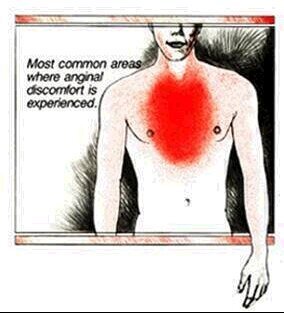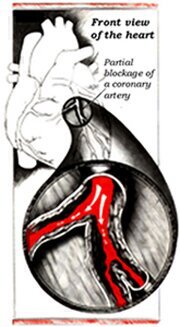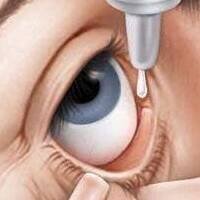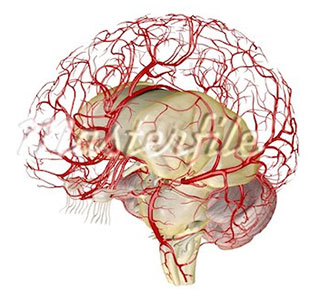Recommendations for Women and Men above 50 years:
- Counsel on the risk osteoporosis and related fractures.
- Check for secondary causes.
- Take adequate amounts of Calcium (at least 1200 mg daily including supplements if necessary) and Vitamin D.
- Regular weight-bearing and muscle strengthening exercise to reduce risk of falls and fractures.
- Avoid smoking and alcohol.
- Bone mineral density testing is recommended.
Anemia
What is Iron Deficiency Anemia?
Iron Deficiency Anemia (IDA) is a condition where a person has inadequate amounts of iron to meet body demands. If uncorrected, IDA leads to reduced work capacity, diminished learning ability and increased susceptibility to infection and possibly increasing the risk of death.
Is Iron Important?
Iron is an essential component of hemoglobin, the oxygen carrying pigment in the blood. Iron-deficient people tire easily because their bodies are starved for oxygen.
Iron is also part of myoglobin which helps muscle cells use oxygen. Without enough iron, the body fuel cannot be properly utilized.
Who is Most Affected and Why?
Iron Deficiency anemia occurs frequently in the following cases:
- Pregnant women
- Infants (at birth, infant has enough stored iron for 3-6 months,
making it important to feed iron-fortified cereals after 6 months of age)
- Growing children and teens (due to an increased utilization)
- Women of child-bearing ages (due to monthly menstrual losses and/or repeated pregnancies)
- The elderly (due to poor dietary intake, long term aspirin use, colon cancer or Peptic ulcer disease)
-
Vegetarians, due to lack of iron rich meat (especially red meat) in their diets.
People with IDA may suffer from:
There are many symptoms of anemia. Each individual could not necessarily experience all the symptoms, and if the anemia is mild, the symptoms may not be noticeable. Some of the symptoms are: Pale skin color, fatigue, irritability, dizziness, weakness, shortness of breath, sore tongue, brittle nails, headache, and decreased appetite (especially in children).
How To Diagnose Anemia?
There are several complex lab tests done to diagnose Iron Deficiency Anemia, the most important is serum ferritin for early diagnosis and the simplest is hemoglobin, since lower than normal hemoglobin levels indicate anemia.
Hemoglobin ranges are:
In Adults:
- For Men: 13.5 to 17.5 g/dL
- For Menstruating Women: 12.0 to 15.5 g/dL
In Infancy and Childhood:
- 6 months to 5 years: the hemoglobin levels should not be less than 11 g/dL.
- 5 years to 12 years: the hemoglobin levels should not be less than 11.5 g/dL.
During Pregnancy:
- First and third trimesters: the hemoglobin levels should not be less than 11 g/dL.
- Second trimester: The hemoglobin levels should not be less than 10.5 g/dL
Treatment
- Eat a lot of meat, fish and liver
- Eat a lot of vitamin C rich food and drinks as orange, strawberry, guava, kiwi along with the iron rich food, to increase the absorption of iron and maximize the benefits.
- Avoid phosphates (cheese, soft drinks, fast-food, sausages), phytates (cereals), tannins (coffee, tea), oxalates (chocolate), alginates (pudding, instant soups, ice cream), polyphenoles (vegetables, cereals, spices) since they inhibit iron absorption.
- Ideal iron preparation for oral therapy should be:
- Given with vit.C to increase iron absorption
- A recommended daily dose of 100 mg iron is required, so that the desired 20 mg should be absorbed
- A common error is to discontinue iron therapy after the hemoglobin rises toward normal, this is because replenishment of iron stores occurs slowly and therapy must be continued for 3-4 months if stores are to be repleted
- Parenteral administration should be reserved for those subjects who are unable to tolerate or absorb orally administrated iron, because of its systemic reactions which may be severe (headache, fever, arthralgia, back pain and fatal anaphylactic shock).
Deep Venous Thrombosis
A DVT is a blood clot in a vein in the leg, which stops blood flow back to the heart.
It can occur for several different reasons such as:
- Immobility due to surgery
- Accident
- A long flight or journey
- A family history of DVT
- Contraceptive pill and hormone replacement therapy (HRT)
- Medical and genetic conditions
- Pregnancy
Your risk of developing DVT is also increased in case of:
- Obesity
- Smoking
- Over 40 years of age (particularly if you have a condition that restricts your mobility).
What are the Symptoms?
The symptoms of a DVT in the leg include:
- Swelling
- Pain
- Warm skin
- Tenderness
- Redness( particularly at the back of your leg and below the knee)
Diagnosis of a DVT is normally made by a scan of the veins in your leg; referred to as a 'Duplex' scan.
A DVT usually (although not always) affects one leg. The pain may be made worse by bending your foot upward towards your knee. In some cases, there may be no signs or symptoms of DVT at all in the leg. The problem may only become apparent when a pulmonary embolism ( blood clot formation inside veins of the lung ) develops as a result of the blood clot in the leg.
Symptoms of a pulmonary embolism include breathlessness, chest pain and, in severe cases, collapse. Both DVT and pulmonary embolism are serious conditions that require urgent investigation and treatment.
Treating deep vein thrombosis (DVT) will prevent the clot getting larger, breaking off (an embolism) and traveling up the vein to your lungs. It can also reduce the risk of post-thrombotic syndrome and prevent a further DVT from occurring in the future.
The usual treatment regimen will include:
- Pharmacologically (anticoagulants).
- Compression stockings.
Hepatitis C
Hepatitis C is a blood-borne infection, most cases occur in people who share toothbrushes, razors, dental instruments, or needles contaminated with traces of blood. Some people clear the infection naturally, and others with persistent infection may remain free of symptoms for years, or may have symptoms. After many years of infection, some develop cirrhosis, and a few develop liver cancer. Treatment can clear the infection in up to half of cases.
What are the functions of the liver?
The liver, which is located in the upper right part of the abdomen, has many functions which include:
What is hepatitis and hepatitis C?
Hepatitis means inflammation of the liver. There are many causes of hepatitis. For example, alcohol excess and various infections. Several different viruses can infect the liver and cause hepatitis. One type of virus which causes hepatitis is called the hepatitis C virus.
How can you get hepatitis C?
Hepatitis C is a blood-borne disease. The main source of infection is from blood from an infected person.
- Most cases of hepatitis C are caused by using contaminated needles to inject drugs ('sharing needles'). Using other used injecting items such as syringes, etc, is a cause of infection.
- Some people who received blood transfusions and blood products several years ago were infected with hepatitis C from some donor blood.
risk of contracting hepatitis C from needlestick accidents, or other injuries involving blood spillage from infected people.
- Sharing toothbrushes, razors, and other such items which may be contaminated with blood. Also, from using equipment which is not sterile for tattooing, body piercing, etc.
- There is a risk that an infected mother can pass on the infection to her baby.
- There is a risk that an infected person can pass on the virus whilst having sex.
You cannot pass on the virus during normal social contact such as holding hands, hugging or sharing cups, etc.
What are the symptoms and how does hepatitis C progress?
There are two phases of infection with hepatitis C virus. An acute phase when you first become infected, and a chronic (persistent) phase in people where the virus remains long-term.
Acute phase
When first infected with the virus, most people have no symptoms, or only very mild symptoms. If symptoms do occur they develop about 7-8 weeks after being exposed to the virus and may include: feeling sick, vomiting, and feeling generally unwell. Some people become jaundiced (yellow). So, most people who become infected are not aware of it at first.
Following the initial infection:
Chronic phase
Of those people who develop chronic infection
- Some people remain well throughout life. They develop no damage or problems to the liver. However, even if you have no symptoms, if you have chronic infection you can still pass on the virus to others who may develop problems. For example, you may pass on the virus if you share needles for injecting drugs.
- Some people develop some symptoms due to persistent inflammation of the liver such as: muscle aches, tiredness, feeling sick, lack of appetite, intolerance of alcohol, pains over the liver, jaundice, depression. Symptoms vary in severity and some people have liver inflammation without feeling any symptoms.
- About 1 in 5 people with chronic hepatitis C infection develop cirrhosis over a period of about 20-30 years. Cirrhosis is like a 'scarring' of the liver which can cause serious problems, and 'liver failure' when it is severe. (See separate leaflet called 'Cirrhosis'.) Some people with chronic hepatitis C have no symptoms for many years until they develop cirrhosis. Only when the liver starts to fail with cirrhosis do symptoms appear.
- A small number of people who develop cirrhosis develop liver cancer after a further period of time.
How is hepatitis C diagnosed?
The specific antibody against hepatitis C can be detected by a simple routine blood test in your blood. (Antibodies are proteins made by the immune system to attack viruses, bacteria, etc.
However, this test remains positive even in people who have cleared the virus from their body.
(The antibodies remain even if the virus has gone.) Also, it can take up to six months for the antibody test to become positive after first being being infected. (As the body may take a while to make these antibodies.) So, a negative test does not necessarily rule out a recently acquired infection.
A repetition of the test a few weeks may be advised in some people who have recently been at risk of catching hepatitis C.
If the antibody test is positive, then a further blood test is needed to see if the virus is still present (chronic infection). This is a more specialised test which detects particles of the virus. Also, there are several different strains (types) of the hepatitis C virus.
Tests may be done to find exactly which strain you are infected with. Some strains are more resistant to treatment than others.
How can I prevent passing on the virus to others?
If you have a current hepatitis C infection you should:
- Not share any injecting equipment such as needles, syringes, etc.
- Not donate blood or carry a donor card.
- Not share razors, toothbrushes or anything else that may possibly be contaminated with blood.
What is the treatment of hepatitis C?
The main aim of treatment is to prevent severe liver damage leading to cirrhosis. If you have chronic hepatitis C but have little or no damage to the liver, you are at low risk of developing cirrhosis. No treatment may then be needed.
The usual treatment is a combination of medicines called interferon and ribavirin. This treatment can clear the virus ('cure') in up to half of cases. Interferon is in given by injection once a week or more, and ribavirin tablets are taken each day.
A course of treatment lasts 6-12 months. The treatment period can be a difficult time as side-effects may develop from these powerful medicines.
A course of treatment lasts 6-12 months. The treatment period can be a difficult time as side-effects may develop from these powerful medicines.
Even if the treatment does not clear the virus, it may still slow down the progression of inflammation and liver damage.
Some other points about hepatitis C
- If you have a current hepatitis C infection you should not drink alcohol. Regular drinking of alcohol can greatly increase the risk of developing cirrhosis.
- There is no vaccine against the hepatitis C virus (unlike hepatitis A and B).
- If the virus is cleared with treatment, you are not immune to future infection. You can still be re-infected, for example, if you use a contaminated needle.
Baldness can be treated
GET TO KNOW YOUR HAIR
Our hair is an important part of who we are. Everyone is born with about 100.000 hair follicles in his/her scalp. Hair is composed of a shaft, which rises outside the skin and a root inside the skin. The root is enclosed in a sac-like structure called the hair follicle, which is responsible hair growth.
A healthy follicle produces a strong, thick and colored hair. Hair grows at a rate of about ½ inch per month. The life cycle of the healthy follicle repeatedly goes through two main phases throughout its life.
a growing phase, followed by a resting phase after which the follicle sheds its hair and produces a new hair in its place. It is normal to shed 50 to 100 hairs in each day.
WHAT IS BALDNESS?
For those who wonder why this happens, it all starts with the genes. Over 90 percent of men's hair loss is caused by inherited genes and by the presence of a hormone called androgen (the male sex hormone).
Men who experience hereditary hair loss have an increasing number of damaged hairs which grow thinner and their growth cycles are shorter, until eventually no hair is produced.
As more hairs become thinner and with more frequent shedding the person appears balder. Woman may also show baldness but it is usually milder with only diffuse thinning of hairs.
BALDNESS CAN BE TREATED
Hair loss affects men both physically and psychologically. Severe hair loss evokes not only cosmetic concerns but also feelings of vulnerability and loss of self-confidence. Fortunately, baldness is not a helpless situation, there are ways to control hair loss as:
- Treatment with drugs that reduce the effect of male sex hormone can be applied on the scalp, however they may decrease sexual desire and may cause difficulty in erection.
- The most promising treatment for baldness are drugs that are applied to the scalp to increase the blood supply of the hair, thus improving hair nutrition, stimulating hair growth and reducing hair loss.
- Hair transplant is another option for treatment. It is used when other methods fail, probably due to delayed onset of the treatment.
SELF TEST
Now take a careful look at your hair, does it appear less dense than before? Are you anxious to know to which extent you are at risk to lose your hair in order to start treatment.
You can answer this simple self-assessment survey:
- Have your close family members, such as father or brother, experienced hair loss?
- Have your extended family members, such as grandfathers, uncles, experienced hair loss?
- Have you noticed more hairs than usual on your pillow, or in your comb?
- Have you or anyone you know noticed a change in your hair's fullness?
- Did your scalp skin became visible?
If most of your answers are yes don't panic, treatment is now available. Consult your doctor as early as you can. Best results are obtained if treatment start soon after the onset of hair loss.
Understanding Angina

Areas of anginal discomfort
What is Angina?
Angina, or angina pectoris, is a frequently occurring discomfort. It's usually located near the center of the chest. The pain or discomfort occurs when the blood supply to part of the heart muscle doesn't meet the heart's needs. As a result, the heart doesn't get enough oxygen and nutrients.
The discomfort occurs most often during exercise or emotional stress, that's when the heart rate and blood pressure increase, and the heart muscle needs more oxygen.
Anginal pain or discomfort is usually brief, lasting just a few minutes. People describe it as heaviness, tightness, pain, burning, pressure or squeezing. Usually it's located behind the breastbone. Sometimes it spreads to the arms, neck or jaw. It may also cause numbness in the shoulders, arms or wrists.
Angina and Heart Attack
Angina is different from heart attack. With angina, the blood which flows through coronary arteries (which bring blood to the heart muscle) is reduced, especially when the heart must do more work. This reduced blood flow is temporary and leads to discomfort in the chest.
With a heart attack, the blood flow to part of the heart muscle is suddenly cut off when a coronary artery is blocked. The chest pain that results is usually more severe and lasts longer.

Angina and heart attack
What Causes Angina?
Angina and heart attack are caused by narrowing of the coronary arteries due to deposition of fatty substances such as cholesterol. It usually starts early in life. Everyone has it to some degree by middle age.
Medical Treatment
Nitrates usually work well to relieve and even prevent chest discomfort from angina. They could be taken in tiny tablets put under the tongue to dissolve, oral capsules, tablets or spray.
It may take several tablets a day to control your symptoms. Nitrates are safe and not habit forming, so don't be afraid to take them, but first ask your doctor about the right nitrate in the right formulation at the right timing.
What You Can Do
You can improve your condition by altering your way of life to reduce the chance of anginal attacks. The suggestions that follow can help you live more comfortably with angina.
- Control your physical activity, learn what kinds of activities bring on your angina, and avoid them. Moderate exercise may be good for you. Usually symptoms of angina decrease when a person starts a program of progressive exercise. Ask your doctor about the best types and amounts of exercise for you.
- Avoid emotional upsets including outbursts of temper, excitement, and long-lasting tensions that can trigger angina. Meditation and relaxation exercises are good ways to calm your emotions.
- Adopt good eating habits since digestion, like exercise causes the heart to work harder. That means it needs more blood. Try to avoid fatty meals and a rich food that leaves you feeling stuffed. Extra weight can also aggravate angina.
- Don't smoke since smoking is bad for your general health. Cigarette smoking often makes angina worse, and it increases the risk of heart attack and other circulatory disorders.
- Control high blood pressure which increases the risk of developing heart disease and other circulatory disorders, it also increases the heart's work and can aggravate angina, so follow your doctor's advice about controlling your blood pressure.
Therefore angina is a common problem. Most people who understand angina and act to control it can lead active lives.
DRY EYE
WHAT IS DRY EYE?
One of the most common eye problems.Most people assume that gritty, red, watery eyes are just part of their lives. Accordingly, one out of five may be suffering from dry eye and is unaware of it. Tears are produced by two different methods;one method produces tears at a slow steady rate and is responsible for normal eye lubrication.The other produces large quantities of tears in response to eye irritation or emotions. Dry eye is the decline of the quantity and/or quality of tears.
WHAT IS MEANT BY TEAR FILM?
Tears are secretions of special glands known as lacrimal glands,
a film of tears spreads over the eye by blinking,it makes a smooth eye surface.Without our tear film we can not see clearly.
The tear film is not a simple fluid, it consists of 3 layers
- An oily layer : Forming the outermost layer.It reduces evaporation of tears.
- watery layer : Forming the middle layer,and about 90% of the tear film .It washes away foreign particles.
- A mucus layer : Forming the innermost layer, allowing the spreading of the tear film over the surface of the eye, and helps the eye remain wet.
How do I know I have dry eye?
- If you feel your eyes gritty, itchy & dry.
- If you are having eye irritation from smoke, dust & wind.
- If you have chronic redness or foreign body sensation.You might have dry eye so, Please consult your eye doctor soon.
What is your age and gender?

i.e. Pregnancy, lactation, postmenopause
Tear production decreases by age.Although both men & women of any age may experience it, women are most often affected. This is due to hormonal changes.
Could other diseases be the cause of dry eye?
Several diseases may result in dry eye such as diabetes, thyroid abnormalities, hepatitis, rheumatoid and other eye diseases.
Are you a computer user?
Staring at the screen for long hours, reduces blinking so that the tear fluid is no longer adequately distributed over the eye surface.
Some guidelines to reduce the risk:
- Distance between the eye and the screen should be 50-70 cm.
- Edge of the screen should not be above eye level.
- Edge of the screen should not be above eye level.
- Short breaks are needed.
Do you wear contact lenses?
Then your eyes have increased need for fluid, in addition, the lenses decrease tear production, and reduces blinking thus affecting spread of mucus that is why you are liable to develop dry eye.
Do you work in closed buildings?
Working in interior buildings, overheated rooms with low humidity causes dust particles to be distributed in the air of the room binding molecules of contaminants, which cannot be washed by tears, thus leading to eye irritation. A natural solution for improving this condition is plants, which keeps air pure, in addition to regular areation.
Are you on any medications?
Some medications, such as drugs for allergy, sedation or contraceptive pills, may reduce tear production.
What about the surrounding enviroment?
Last but not least sunny dry weather, air currents, pollution, fumes, dust or waste gases all aggravate dry eye.
How is dry eye diagnosed?
An opthalmologist (eye doctor) is usually able to diagnose dry eye by examination, but sometimes measuring the tear production by specific tests may be necessary.
What is the treatment?
It is a safe and easily treated disease. Treatment is very simple, just replacing the normal tears with artificial tears, several types are available. Your doctor will choose the most suitable for your condition.
Several other modalities of treatment, exist for people with persistent complains of dry eye.
It must be noted that treatment must be continous and prolonged and the use of a single drop occasionally will not result in control of the symptoms.
Is it a must to treat dry eye?
Yes, because if not treated properly it may lead to serious problems.
Dry Eye Project
Dry eye is an under-diagnosed, yet a prevailing problem. Hence, MINAPHARM/Bausch & Lomb will be implementing a national patient awareness campaign for the welfare of the Egyptian population.
Dementia
What is dementia?
Dementia is one of the rapidly growing health care problems, which affects the brain. It is a progressive illness where impairment of most aspects of brain functions takes place, it can affect memory, thinking and actions. People at any age can develop dementia. However it is much more common in elderly especially in women.
Causes and risk factors:
Genetic factors, aging, head trauma, occlusion of the blood vessels supplying the brain (infarcts), or brain haemorrhage (decreases oxygen and nutrition to brain cells).

You are not alone

Maestro of your body functions
People with dementia suffer from:
Progressive memory loss, inability to concentrate and to solve problems, disorientation (of people, place, time), disturbances in sleep, language impairment (inability to read, write, speak properly) and even personality changes.
Take Care!
Never assume that confusion, disorientation or memory loss is normal. You have to tell your doctor about any changes you feel.
Diagnosis and Treatment:
It is important to have a proper diagnosis as there are many causes of memory loss other than dementia. After diagnosis, the goal of treatment is to control its symptoms and to treat the cause.
Your doctor will provide you with suitable medications and advice, which you should follow.
How to cope with dementia to lead a normal life?
Dementia is an illness which will gradually affect your life, as well as your family members' lives.
It is important to know that you are not alone, people around you are willing to help; your family, friends, health and social workers. Always remember that you are not helpless.
There are many positive steps which can help you to cope with the condition,here are some of these steps:
- Make a routine for yourself.
- Write things down.
- Keep important things in one place.
- Don't be afraid to ask for help.
- Keep up your social life.
- Hang on to your personal intersets and hobbies.
Vitamin supplementation during infection. What is a pro-antibiotic?
Infections are caused by micro-organisms, including bacteria, viruses, or fungi. Not all microorganisms cause infections in the body. The body's immune system plays a major role in determining whether the body will be able to overcome an infection or not.
Some points which may be helpful to enable the immune system to overcome infection:
Lifestyle: Stress can depress the immune system, thus increasing the body's susceptibility to infection.
Exercise increases the response of your immune system, which may also help to prevent infections.
If your body fails to resist the infection, you have to take a particular antibiotic and a vitamin during the infectious period.

Variety of medication, just choose the suitable one
Fatigue and stomach disturbances are normal conditions associated with antibiotic use during infection.
What you have to know is that your body needs special requirements during this period. There is an increase in demand of many vitamins. Also, other vitamins should not be taken as they promote infection.
The vitamin used during the infectious period should be formulated in a way that fits your body's requirements during infection. It should be iron free as iron is known to promote bacterial infection, also it should contain a high concentration of vitamin A which has a positive effect on the body's immune system. Adequate amounts of some vitamins as vitamin k, C, D and B should be present to compensate their loss during the infection.
ADVICE: Once you have a bacterial infection, consult your doctor to give you the specific antibiotic and don't use any vitamin, choose the one which is tailored to be taken with antibiotic during infection. These vitamins are available now in the market.
Glaucoma
WHAT IS GLAUCOMA?
Glaucoma is a group of diseases that affect the eye and lead to narrowing of the visual field gradually till the complete loss of vision. The pressure inside the eyes increase. Pressure itself is not a disease, but rather the major most important risk factor for Glaucoma development.
WHAT CAUSES GLAUCOMA?
At the front of the eye, there is a small space called (anterior chamber) within which clear fluid flows in and out, in glaucoma the fluid builds up raising the pressure inside the eye, thus causes damage to the optic nerve which carries the images we see to the brain. This damage causes gradual decrease in the visual field till complete loss of vision.
HOW OFTEN SHOULD I GET AN EYE EXAMINATION TO PROTECT MY VISION?
Everyone should get an eye examination, however, the frequency of examination varies according to age and whether there is a higher risk of developing Glaucoma.
Risk factors for Glaucoma include:
- Hypertension
- African descendants are at higher risk
- Diabetes
- Prolonged corticosteroid therapy
Therefore, the frequency of examination is recommended to be as follows.
Under 45 years:
- With risk factors: Every 2 years
- Without risk factor: Every 4 years
45 years & above:
- With risk factors: Every year
- Without risk factor: Every 2 years
Glaucoma is only diagnosed through a series of tests administered & interpreted by an opthalmologist (eye doctor), therefore a regular eye examination is the single most important tool in preventing vision loss.
TREATMENT OF GLAUCOMA
Treatment focuses on lowering pressure inside the eye to a target level with regular eye examination.
If you were diagnosed with glaucoma, your doctor will set a treatment based upon your medical needs to minimize the effect and the risk of the disease.